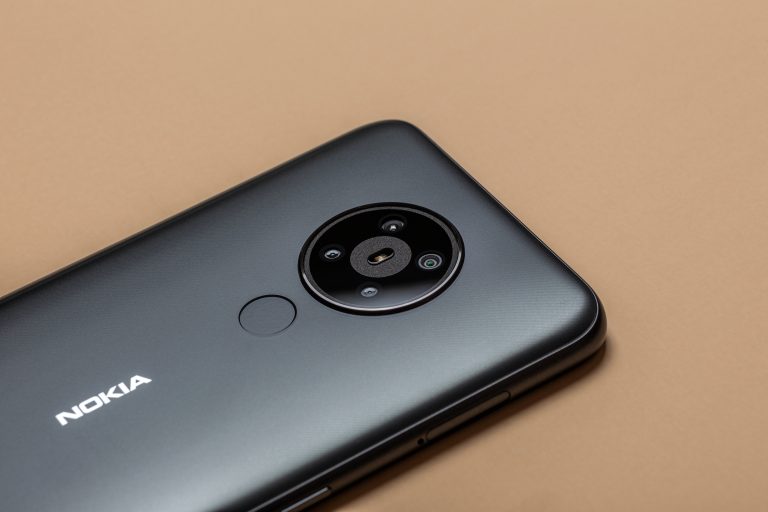They say you learn from your mistakes. But we believe you can take insights and turn your business around by learning from others’ mistakes as well.
One of the most significant examples of a company failure in recent years is the story of Nokia.
You can gain valuable business lessons from them.
Was it because the CEO Stephen Elop’s strategies couldn’t improve for Nokia’s benefit, or were the preferences given to politics rather than good service?
Nokia was once considered the most dominant mobile phone brand in the world. The company launched the first internet-enabled phone in 1996, and it also released a touch-screen mobile prototype.
The company was the best-selling mobile phone brand in the world in 1998, with an operating profit of $4 billion.
So, when did it all fall apart?
The reasons behind failure of Nokia
1. The fear of change took over Nokia
Even after having a huge customer base, Nokia was reluctant to change its existing features.
The business was adamant about retaining its existing innovation strategy, thinking feature phones would rule mobile technology in the future. Their misinterpretation was the one reason for Nokia’s demise.
Nokia hesitated to upgrade to Android because it thought customers would not switch over.
Similarly, the management didn’t consider touchscreen smartphones as essential.
When different businesses had been enhancing and running on their smartphones, Nokia’s control became beneath the impression that people wouldn’t take delivery of touchscreen telephones and might retain the QWERTY keypad layout.
Related Read: Top 10 Ways to Inspire Innovation And Show Leadership
2. The competitors were smarter
Shortly, Samsung launched its affordable Android phone into the market and gained popularity.
In 2007, Apple introduced the iPhone, which disrupted the market and gained a cult-like popularity very quickly.
The Nokia N95, added in 2007, changed into Nokia’s reaction to the phone revolution and featured GPS, Wi-Fi, stereo speakers, and a five MP camera.
However, these requirements weren’t ground-breaking.
Moreover, to compete with Apple, Nokia developed an innovative product known as the “iPhone killer,” which failed miserably in the market, leading to Nokia’s demise and paving the way for Samsung and Apple to dominate the market.
Nokia released its Symbian operating system after recognizing market trends. By then, Apple and Samsung had established their dominance.
It was challenging for the Symbian operating system to gain traction. This was another reason for the failure of Nokia.
Nokia overestimated the strength of its brand value.
The company thought people would keep buying their products, regardless of whether they offered them up-to-date solutions.
While Samsung and Apple released advanced phones every year, Nokia primarily launched a basic Windows phone.
Related Read: Top Innovations You Must Start Harnessing Today
3. Nokia became the latecomer in the race
Nokia tried to sail their boat by introducing new products. They turned out to be outdated as well.
For example, the Nokia Lumia series, which served as a jump-start move, failed due to a lack of innovation.
The monotonous and unattractive features didn’t attract customers. On top of it, Nokia didn’t even have 3G-capable phones in the 4G period. Their Asha series saw a similar fate too.
The Chief Executive Stephen Elop told the Finnish national daily Aamulehti, “We had moments in the past year and a half when we could have done some things differently had we known that the industry was changing so rapidly. It happened so fast that Nokia’s situation has now become difficult, but we keep honing our strategy.”
Like Apple, Nokia tried to adopt an umbrella branding strategy and roll out new versions year after year but failed miserably.
Related Read: The CIO’s Role in Innovation: 2023 Edition
4. Unsuccessful branding plans
Nokia attempted to introduce completely new models under various brand identities, such as the N series, E series, and so on.
As a consequence, consumers found it difficult to make a decision. Additionally, it failed to develop a brand attraction for these products.
Nokia’s long-established user confidence was gradually declining. The company’s marketing and distribution strategies were ineffective.
As a result of the confusion, Nokia decided to develop some interesting hardware and software advancements. These advancements lacked originality and had already been published by Nokia’s competitors.
Nokia’s inadequate marketing and delivery plans became a major factor in the company’s demise in the mobile industry.
Subsequently, Nokia tried to improve its mobility by switching its organizational culture to a matrix-based structure.
Many stakeholders were upset, and senior management members left the business. This interrupted the company’s internal functioning severely.
Its numerous divisions were not correctly coordinating with one another. Internal rivalries in the top management were one of the additional problems brought on by this absence of coordination.
These issues didn’t directly affect Nokia, but they did contribute to its demise. According to Alastair Curtis, Nokia’s chief designer from 2006 to 2009, “We were spending more time-fighting politics than doing design.”
The impact of the downfall
Nokia, headquartered in Finland, an information technology and consumer electronics corporation, was once the world’s largest vendor of mobile phones from 1998 to 2012.
In 2003, Nokia created its best-selling mobile, the Nokia 1100.
During the launch of the iPhone, Apple had a mere 5% share of the global market, and half of all smartphones sold worldwide were Nokia’s.
In the next 5-6 years, the market value of Nokia declined by about 90%. Nokia shipped only 4.4 million phones in 2013 compared to 463 million in 2007.
Finally, Nokia was acquired by Microsoft in 2013.
Your Learnings
Nokia’s failure story teaches us that businesses must stay ahead of the curve and be open to change.
However, it’s easier said than done. To ensure business innovation, it’s essential to have an idea and innovation management medium in place.
An idea management software like Idea Assist can help businesses stay current by enabling them to leverage every employee’s idea and top talent.
Not only does it help businesses stay innovative and competitive by giving them a platform to collect and evaluate ideas, but it also enables businesses to see the big picture and evaluate the feasibility of different ideas before committing resources to them.
With a professional tool, businesses can capture innovations from all levels of the organization, evaluate them objectively, and prioritize them based on the company’s strategic goals.
In conclusion, ensure that the Nokia company’s failure serves as a cautionary tale and you harness innovation to your best.



